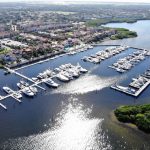
Marine Surveyor 33904: Common Marine Surveying Techniques Used By a Suncoast Marine Surveying
Maritime surveying is an essential component of maritime operations. A Marine Surveyor 33904 plays an integral role in ensuring that vessels, ports, and other marine structures are safe and sound. The professional helps to inspect all aspects of the vessel, including its hull condition, machinery, plumbing, electrical systems, fuel system, cargo and inventory, navigational equipment, and more. Through thorough inspections, the surveyor ensures that any potential issues or risks are addressed before they can potentially cause harm to personnel or property. Suncoast Marine Surveying is a premier provider of professional maritime surveying services throughout the 33904 region.
At Suncoast Marine Surveying, our team of experienced professionals have extensive experience conducting marine surveys for a variety of vessels and applications. Our highly trained surveyors use a combination of modern technologies and tried-and-true surveying techniques to ensure accurate results. Here are some of the most common surveying techniques used by our skilled Marine Surveyor 33904:
Visual Inspection: This is one of the most fundamental parts of any marine survey. Visual inspection involves close examination of the vessel’s plating, piping, wiring, and other components. During this process, the Marine Surveyor 33904 looks for signs of corrosion, wear and tear, visible damage, structural defects, or anything else that could impact performance or safety. Every small detail is noted so that any necessary repairs can be made.
Measuring: In order to properly assess a vessel’s condition and make sure it meets legal standards and requirements, measurements are taken using specialized tools such as calipers, rulers, and gauges. The Marine Surveyor 33904 may also take photos during this stage of the process for documentation purposes.
Ultrasonic Instrument Testing: Using ultrasound reflections from rails or plates of the vessel or structure being surveyed, ultrasonic instrument testing (UT) can help detect corrosion thinning or changes in strength of steel materials. This technique is especially useful when inspecting below the waterline where visual inspection alone isn’t possible. The data obtained through UT can be used to determine if further analysis is necessary or if repairs need to be made right away.
Non-Destructive Testing: Non-destructive testing is another way for the Marine Surveyor 33904 at Suncoast Marine Surveying to detect flaws which cannot be seen through visual inspection alone. This method is often used for pipes, tanks, and other internal components and may use X-ray technology or special probes to identify cracks, corrosion pockets, porous welds, etc. before any major damage occurs.
Magnetic Particle Testing: Magnetic particle testing is an advanced method that uses magnetic fields and visible fluorescent particles to locate surface flaws on metals. This technique can detect cracks, porosity, pinholes, scratches, and other surface defects which may not be visible during a visual inspection. It is extremely precise and much quicker than traditional methods.
In addition to these common surveying techniques, there are others that are sometimes utilized by the Marine Surveyor 33904 at Suncoast Marine Surveying depending on the specific situation. These include idle RPM tests, thermal imaging, metallurgical examinations, videography underwater surveys, air pressure tests, sounding rods tests, and much more. No matter what type of marine survey needs to be done in 33904 – our experienced team can provide efficient and comprehensive solutions that meet all industry standards and regulations. Contact us today to learn more about our full range of services!r


